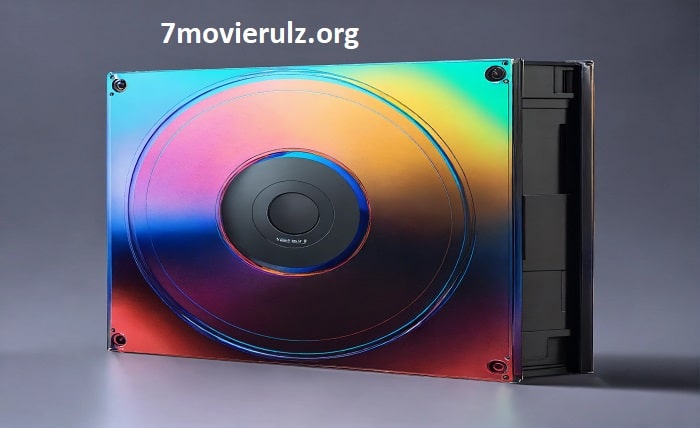In the evolving landscape of home entertainment, DVD play remains a steadfast choice for many enthusiasts. Despite the surge in streaming services, the reliability and quality of DVD play continue to make it a preferred method for movie lovers. This comprehensive guide delves into the intricacies of DVD play, offering insights into its operation, benefits, and how to maximize your viewing experience. Whether you’re new to DVD play or looking to enhance your existing setup, this article provides the essential knowledge to enjoy seamless DVD playback.
What is DVD Play?
DVD play refers to the process of using a DVD player to access and view digital video discs. These discs store high-quality video and audio content, providing an immersive viewing experience. The essence of DVD play lies in its ability to deliver consistent performance, free from the interruptions that can sometimes plague online streaming. By understanding the fundamentals of DVD play, users can appreciate the technology’s durability and superior picture quality, making it a valuable addition to any home entertainment system.
History of DVD Play
The journey of DVD play began in the late 1990s, revolutionizing the way people consumed media. Before DVD play, VHS tapes were the standard for home video, but DVD play introduced significant advancements in video and audio quality. The introduction of DVD-play devices brought about a shift towards digital media, offering features like scene selection, bonus content, and enhanced durability. Over the years, DVD-play technology has evolved, incorporating improvements such as upscaling capabilities and connectivity options, solidifying its place in the history of media consumption.
How DVD Play Works
Understanding how DVD play functions enhances the appreciation of its capabilities. A DVD play system consists of a DVD player connected to a display device, such as a TV or monitor. When a DVD is inserted, the player reads the disc’s data using a laser beam, decoding the digital information into video and audio signals. These signals are then transmitted to the display device, resulting in smooth and high-definition playback. The intricate process of DVD play ensures that users receive clear visuals and crisp sound, making it a reliable choice for media playback.
Benefits of DVD Play
Opting for DVD play offers numerous advantages that make it stand out in the digital age. One of the primary benefits of DVD play is the consistent quality it provides, unaffected by internet speed fluctuations. Additionally, DVD play allows for the collection of physical media, which can be valuable for archival purposes and easy sharing. The versatility of DVD play extends to various genres and formats, ensuring a wide range of content is accessible. Moreover, DVD play systems often come with user-friendly interfaces and additional features like parental controls and multilingual support, enhancing the overall viewing experience.
Choosing the Right DVD Play Device
Selecting the appropriate DVD-play device is crucial for optimal performance. When choosing a DVD play system, consider factors such as compatibility with your existing setup, supported formats, and connectivity options. High-definition DVD play players offer superior video quality, while multi-disc changers provide convenience for avid collectors. It’s also important to evaluate the device’s build quality and reliability, ensuring that your chosen DVD player system will serve you well over time. By carefully selecting a DVD play device that aligns with your needs, you can enjoy a seamless and enjoyable media experience.
Setting Up Your DVD Play System
Properly setting up your DVD play system is essential for achieving the best performance. Begin by positioning your DVD player in a well-ventilated area to prevent overheating during extended use. Connect the DVD player device to your TV or monitor using the appropriate cables, such as HDMI for high-definition output. Configure the audio settings to match your sound system, whether it’s built-in speakers or an external setup. Additionally, calibrate the display settings on your TV to ensure that the DVD play content is rendered with optimal brightness, contrast, and color accuracy. A well-configured DVD play system enhances the overall viewing experience, making every movie night memorable.
Troubleshooting Common DVD Play Issues
Even the best DVD play systems can encounter occasional issues. Common problems include discs not loading, playback skipping, and audio synchronization errors. To troubleshoot these issues, first ensure that the DVD is clean and free from scratches, as physical damage can impede DVD play functionality. If the disc is in good condition, try cleaning the DVD player’s lens using a specialized cleaning kit. For persistent playback issues, check the player’s firmware and update it if necessary to resolve software-related glitches. Additionally, verifying the connection cables and ensuring that all settings are correctly configured can help address most DVD play problems effectively.
Enhancing Your DVD Play Experience
Elevating your DVD play experience involves more than just owning a DVD player. Investing in high-quality cables, such as HDMI, can significantly improve video and audio clarity. Surround sound systems or soundbars complement DVD play by providing a richer auditory experience. Additionally, organizing your DVD collection and using a multi-disc changer can streamline your viewing sessions, making it easier to access your favorite titles. Customizing the DVD play settings, such as aspect ratio and audio preferences, allows you to tailor the playback to your taste, ensuring that every movie you watch is enjoyed to its fullest potential.
DVD Play vs. Streaming Services
When comparing DVD play to streaming services, several key differences emerge. DVD play offers superior audio and video quality, as it is not dependent on internet bandwidth or subject to compression artifacts. Additionally, DVD play provides a tangible collection of media, which can be beneficial for those who prefer physical ownership and easy access without relying on digital platforms. On the other hand, streaming services offer convenience and vast libraries without the need for physical storage. However, the reliability and quality consistency of DVD play make it a compelling choice for those seeking a dependable and high-quality media experience.
Future of DVD Play
Despite the rise of digital streaming, the future of DVD play remains promising for certain segments of users. Enthusiasts who prioritize audio-visual quality and physical media collections continue to support DVD-play technology. Additionally, advancements in DVD play devices, such as improved connectivity options and enhanced playback features, ensure that DVD play remains relevant. The integration of DVD play with modern home entertainment systems, including smart TVs and high-fidelity audio setups, showcases the adaptability of DVD-play technology. As long as there is a demand for reliable and high-quality media playback, DVD play will continue to hold its ground in the ever-evolving entertainment landscape.
Conclusion
DVD play has stood the test of time, offering a reliable and high-quality medium for enjoying movies and other media. Its consistent performance, superior audio-visual quality, and tangible nature make DVD play a valuable component of any home entertainment system. By understanding the nuances of DVD play, from selecting the right device to troubleshooting common issues, users can fully appreciate and maximize their viewing experience. As technology continues to advance, DVD play remains a steadfast choice for those who seek dependable and immersive media playback. Embrace the enduring benefits of DVD play and enhance your home entertainment setup with this classic yet powerful technology.
FAQ
1. What is DVD play?
DVD play refers to the process of using a DVD player to access and view content stored on DVDs. It involves reading the digital data from the disc and converting it into audio and video signals for display.
2. How do I set up a DVD player system?
To set up a DVD play system, connect your DVD player to a TV or monitor using the appropriate cables, such as HDMI for high-definition output. Configure the audio settings and calibrate the display settings on your TV to ensure optimal playback quality.
3. Why is my DVD not playing on DVD play?
If your DVD play system is not playing a DVD, first check the disc for scratches or dirt. Ensure that the DVD player’s lens is clean, and verify that the player is compatible with the disc format. Updating the player’s firmware may also resolve playback issues.
4. Can I use DVD play with modern TVs?
Yes, DVD play systems are compatible with modern TVs. Using HDMI cables ensures that you get the best audio and video quality. Most modern TVs also support various audio output options, allowing you to integrate your DVD play system with soundbars or home theater setups.
5. Is DVD play better than streaming services?
DVD play offers superior audio and video quality since it is not dependent on internet speed or compression. It also provides a tangible collection of media. However, streaming services offer convenience and access to a vast library of content without the need for physical discs. The choice between DVD play and streaming depends on personal preferences and priorities.





